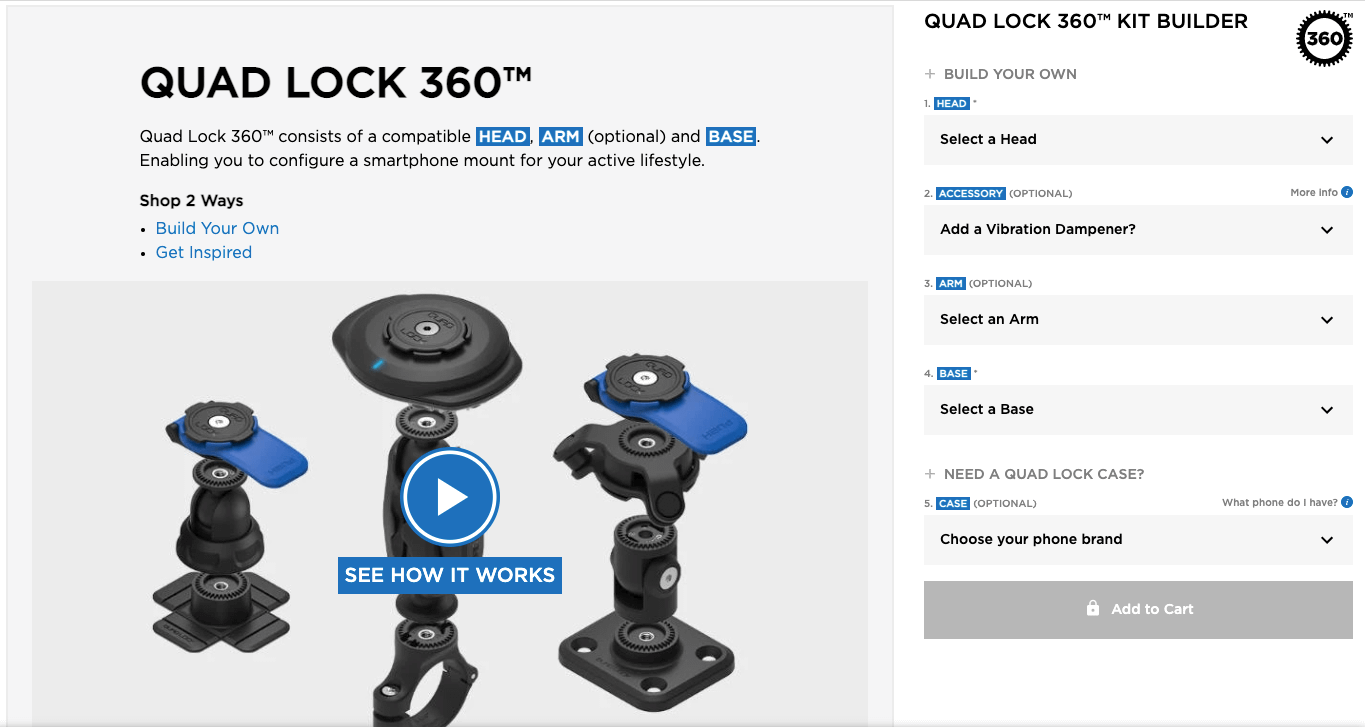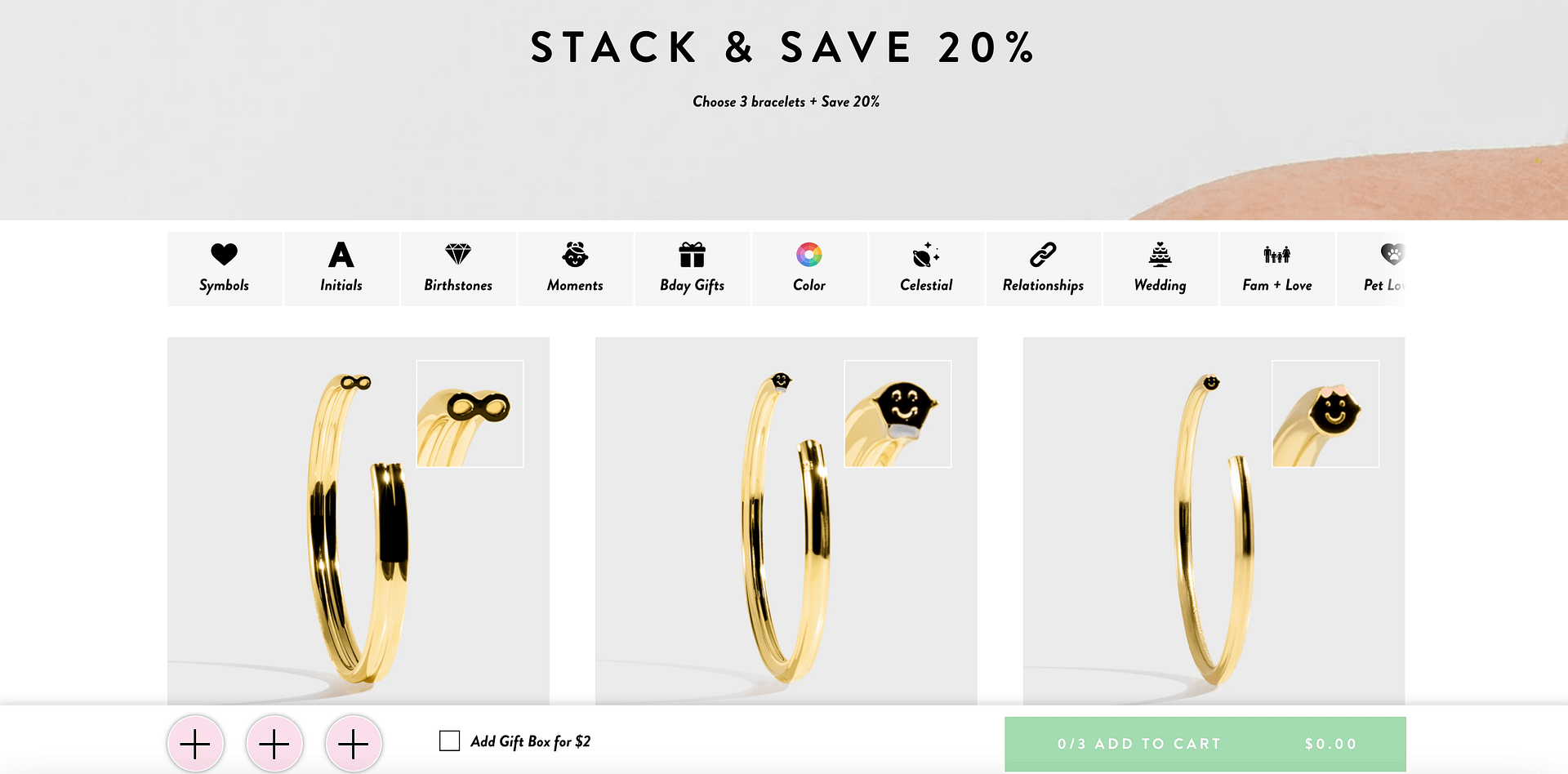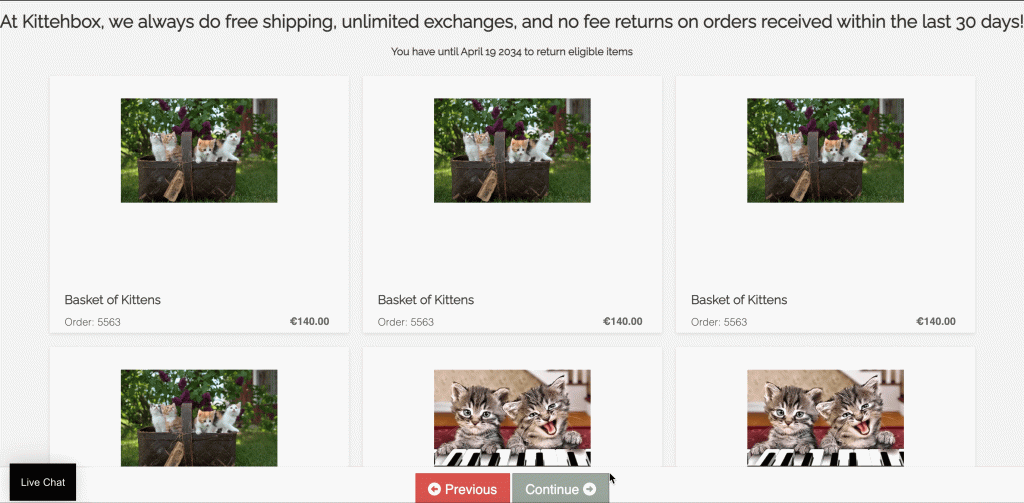How to Offer Bundle Returns For Your Shopify Store

Thousands of Shopify merchants use bundles to get their shoppers to buy more with every purchase.
Bundling (or kitting) products can reduce held inventory, introduce new or overlooked products, and increase your average order value (AOV).
But product bundles also introduce a complicated problem – returns.
What happens when a customer is unsatisfied with a single product within a bundle?
Only having the option to return the entire bundle leaves the customer with a frustrating choice:
- Either return everything and say good-bye to the products that they actually like in the bundle or
- Be forced to keep the unwanted product as waste lying around in their home
Neither leaves the customer with a positive perception of the brand.
Customers like flexibility. And being able to return single products in a bundle gives them the solution they are looking for gives them that flexibility.
But what exactly is a bundle?
What is a Bundle?
Product bundles are “a collection of individual or child products sold together as one SKU under a parent product for a single price”.
Selling bundles helps merchants to highlight products that may be overlooked by their customers.
However, not all bundles are built the same.
Some bundles, like grooming kits, consist of products that don’t work without each other.
Others, like bed sets, have products that work well together but could also be used separately.
And then there are bundles with products that may belong to the same category, like a make-up kit, but each product ultimately has its own use.
Regardless, bundling your products could offer a lot of benefits to the retailer.

Image Source: Annex Products – Quad Lock 360
What are the Benefits of Product Bundling?
At a glance, bundling may just seem like products being offered at a lower price. However, the slim profit margin loss a retailer may see comes at major gains elsewhere.
Average Order Value
Product bundles give the perception that a shopper is getting something at a lower price than it’s worth.
This makes the customer feel like they have more to spend, beyond just purchasing the bundle.
Oftentimes, you’ll find that when a customer adds a product bundle to their cart, they’ll continue browsing and order more with the purchase – helping to increase the average order value.
Inventory Levels
Product bundling also gets products out the door quicker.
Underperforming products can be frustrating and cause inventory holding and waste costs to be unnecessarily high.
Pairing such products with customer favorites in a bundle will get your products out of inventory and into the hands of your customers.
Product Awareness
This also allows your customers to try products that they may have been unaware of or hesitant about purchasing, potentially convincing them to purchase them again in the future.
Now that you understand what product bundles are, let’s dive into how to add bundles to your Shopify store.

Image Source: Stella Valle Stack & Save
How to create a Product Bundle in Shopify
Bundles are not a native feature to Shopify. However, there are a few commonly used methods merchants use to set up product bundles onto their Shopify store.
Create A Single SKU
You can add bundles to your Shopify store by creating a single SKU to represent all the products in the bundle directly on Shopify.
Essentially, you’ll be creating a new product listing that represents the bundle of products.
You do this by adding a new product like you normally would, selecting your parent product, and adding other products from your store into the bundle as child products.
You can also find a step-by-step tutorial with visual aids here to help you out.
This is the simplest way to add bundles and will make it easier to manage returns on those bundles in the long run.
Shopify Scripts
You can also add product bundles to your shop by using Shopify Scripts – small pieces of code that can be integrated into your shop to customize features during checkout.
However, this feature is only available to Shopify Plus merchants and typically calls for the aid of an agency.
Third-Party Apps
Lastly, you can create a product bundle on Shopify by using a third-party Shopify app. Each one offers a different user experience, feature capabilities, and bundle types.
Before you begin creating your bundles, however, it’s important for you to understand the biggest obstacle you may face – bundle returns.
The Challenge of Bundle Returns
There haven’t been many quality automated bundle returns solutions offered to date. As a result, most merchants handle single product bundle returns manually, if they offer it at all.
Inventory Waste
The problem with not offering single product bundle returns is that it increases inventory waste.
Customers will be more likely to return wanted products in order to get rid of unwanted ones.
Not only does this cause unnecessary holding in inventory, but it comes at a major loss of information for the retailer.
Not Knowing Which Item Prompted The Return
When all products in the bundle are returned, the retailer doesn’t know which product was the cause for the return. This is crucial information because it gives merchants insight into where product performance doesn’t meet customer expectations.
When you get full bundle returns, it makes it harder to figure out where exactly those expectations aren’t being met.
Customer Experience
If a retailer doesn’t offer single product bundle returns, the process is typically for the customer to email or call customer service to manually process the return.
Every return requires back-and-forth communication between your service representative and the customer.
Just one return requires the customer to:
- Find the correct service number
- Accurately communicate the problem
- Understand the directions on how to process the return
- Hope that it’ll all go smoothly
Not only does keeping track of all of this per customer, per return, provide a poor customer experience, but it’s an incredible waste of time and energy for your customer service team.
This manual management of returns can cause a lot of confusion and lead to a major loss of information.
Automating the bundle returns process will free up staff time, enhance the customer experience, and help to collect data on customer behavior.
The Solution to Single Product Bundle Returns
Automating returns on your bundle products will turn a frustrating experience into a positive one for both your customers and your service representatives.
Providing customers with an easy user interface that takes them through a step-by-step process where:
- They select the products within their bundle that they’d like to return,
- Why they are returning it and
- What method of return they would like

This will lead to happy customers that are glad they can get their problem fixed without having to talk to someone on the phone or deal with endless emails.
Greater than that, though, merchants will find themselves with a more relaxed customer support team that has freed up energy to assist customers on bigger issues.
The operations team will also be significantly less frustrated because inventory levels will always stay up to date.
Plus, automation makes it easier to collect data on which products are most commonly being returned and why, which will help with product improvements.
Simply put, automating your bundle returns is a win-win situation for everyone.
How to get started
ReturnLogic now offers you an automated solution to single product bundle returns.
Bundle Returns allows retailers to build custom bundle policies for their Shopify store that’ll make it easier for customers to process a return on a single product.
We are currently the only company that supports both exchanges and warranties on bundle returns, meaning your brand doesn’t need to choose between having one or the other.
With Bundle Returns:
- Customers can process bundle returns quickly and easily.
- Internal communications on bundle management will all be in one place.
- Data collected on returned items will make product performance patterns easier to identify.
- Inventory on individual items sold in bundles will stay up-to-date.
Bundles are a lucrative marketing strategy. However, managing returns on bundled products can become a massive waste of time and information, until now.
To learn more about how to manage bundle returns, book a demo today!


